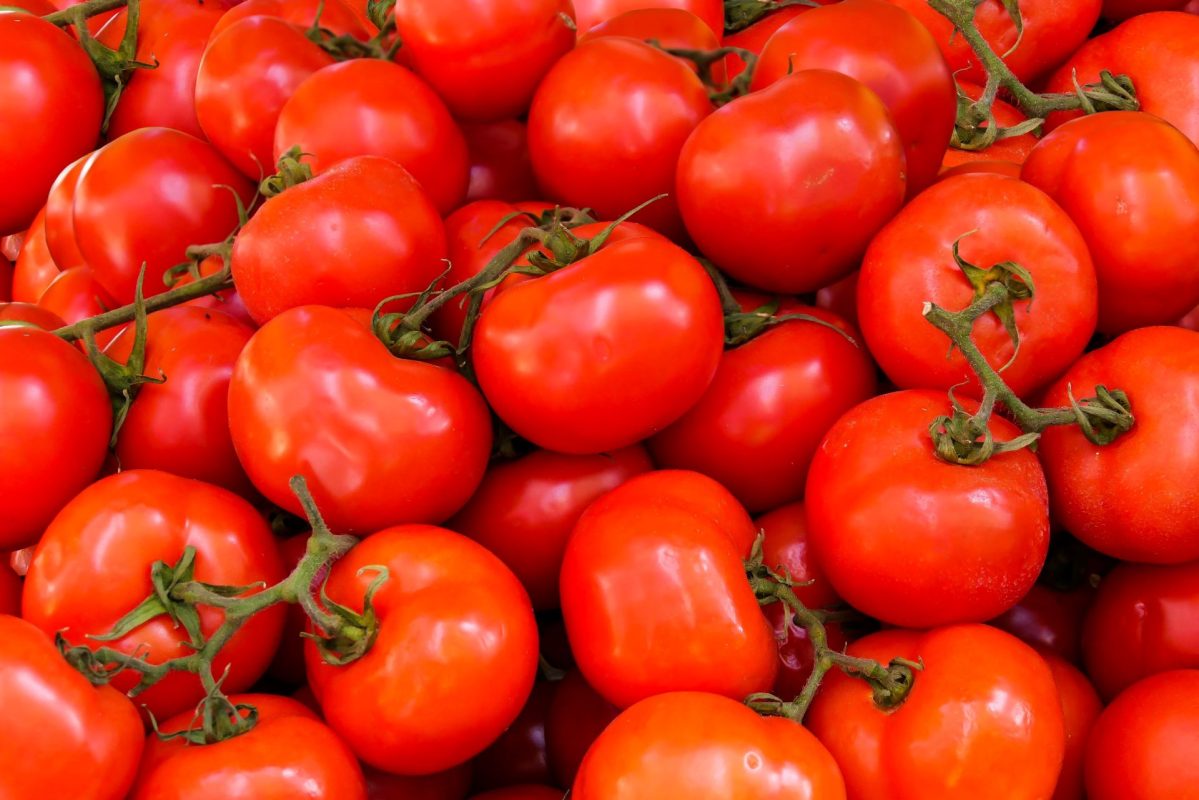YETRAC
Growing Tomatoes in Open Fields: A Comprehensive Guide
Growing Tomatoes in Open Fields: A Comprehensive Guide
Tomatoes hold a significant place as one of the most cultivated and consumed vegetables in Turkey. They are utilized globally in various forms such as fresh consumption, cooking with other vegetables, and processing into products like durable tomato juice, concentrated tomato juice, pickles, canned tomatoes, paste, ketchup, sauces, pulp, and puree, as well as being dried or frozen. Tomatoes are rich in essential vitamins and minerals, containing 20-23 calories, 1g of protein, 0.3g of fat, 0.6g of ash, 93.8-96.0% water, 4g of carbohydrates, 2-3.5% sugar, 0.6g of cellulose, 7.21mg of calcium, 17-28mg of phosphorus, 0.6mg of iron, 1000-1100 IU of vitamin A, 264-314mg of potassium, 19-20mg of magnesium, 24-69mg of chlorine, 17-28mg of phosphorus, 3-10mg of sodium, 0.5-0.8mg of niacin, 20-28mg of vitamin C, 0.09mg of thiamine, 0.03mg of riboflavin, and 0.40-0.80mg of vitamin K per 100g of fresh tomatoes.
Climate Requirements
Tomatoes thrive in warm and temperate climates. Temperatures dropping below zero (-2, -3 ºC) can be fatal for the plant. Spring frost should be over before transplanting seedlings into the field. The ideal temperature range for tomato development is 19-26 ºC during the day and 14-18 ºC at night. A temperature difference of 6 ºC to 8 ºC between day and night is preferred. The pollination process is closely linked to temperature, and tomatoes require temperatures above 10 ºC for proper germination and pollination. Temperatures below 15 ºC can reduce fruit setting. Extreme temperatures above 40 ºC can cause flower pollen to die, leading to a lack of fruit formation.
Soil Requirements
Tomatoes prefer deep, well-drained soils with good water retention capabilities, rich in humus and nutrients. Sandy loam soils are suitable for early varieties. The soil pH should be between 5.5 and 7.0, and the soil should have low salinity (less than 2.3 mS). Lime can be added if the pH is below 5.5, while sulfur (30-50 kg per hectare) should be added if the pH is above 7.0.
Seedling Cultivation
Various mixtures are used for tomato seedling cultivation, such as peat, perlite, vermiculite, or peat, perlite, soil, or compost, sand, soil mixtures. It is beneficial to disinfect the seedling material with a soil fumigant at least one month before seeding. Chemical fertilizers should be mixed into the seedling material 15 days before sowing. The optimum soil temperature for tomato seed germination is between 20-29 ºC.
Soil Preparation and Fertilization
Due to tomatoes’ deep root system, the soil needs careful preparation, with deep plowing to break any impermeable layers below 50 cm. Well-rotted manure (3-4 tons per hectare) should be applied in the fall, and phosphoric fertilizer should be applied as part of the base fertilizer. Additional fertilizers should be applied when fruiting begins. For a yield of 5 tons per hectare, 12 kg of nitrogen, 10 kg of P2O5, and 25 kg of K2O should be applied.
Transplanting
Transplanting should occur when the danger of spring frost has passed, and the soil and air temperatures reach 12-15 ºC. Planting should be done in the late afternoon to avoid exposing seedlings to direct sunlight. Seedlings are ready for transplanting when they reach a height of 15-20 cm.
Cultivation Practices: Weeding
The first hoeing should be done two weeks after transplanting, with subsequent hoeing every 10-15 days. Cultivation is especially crucial in tomato plants grown on stakes.
Watering
Tomatoes require consistent moisture. Insufficient water causes the upper leaves to curl, while excessive moisture, particularly in heavy soils, can lead to plant diseases. Tomatoes are most sensitive to moisture deficiency during germination, emergence, flowering, and fruit formation. Regular irrigation is essential during dry periods, with 2-3 irrigations in rainy regions and 4-5 irrigations in arid regions.
Pruning
In open-field tomato cultivation, pruning is essential for obtaining quality fruit. Two main pruning techniques are employed: sucker removal and tip removal.
Harvesting
The time from seeding to harvest for field-grown tomatoes is 80-100 days, while for transplanted seedlings, it ranges from 60-80 days. Harvesting should be carried out at various ripening stages depending on the distance to the market. Quality tomatoes are characterized by their round shape, appropriate size (6-8 fruits per kg), smoothness, color, few and small seed cavities, low seed content, absence of blossom-end rot, and resilient skin.
Diseases and Pests
Tomatoes are susceptible to various diseases and pests, including early blight, mildew, bacterial spot, bacterial canker, and viral infections. Nematodes, cutworms, hornworms, wireworms

